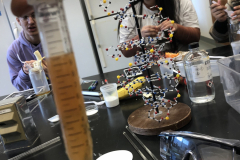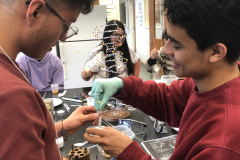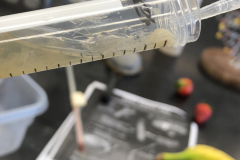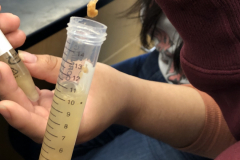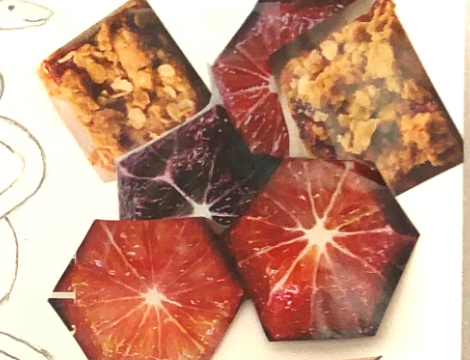
Base Pairs of Who I Am
Base Pairs of Who I Am
Emma Santucci
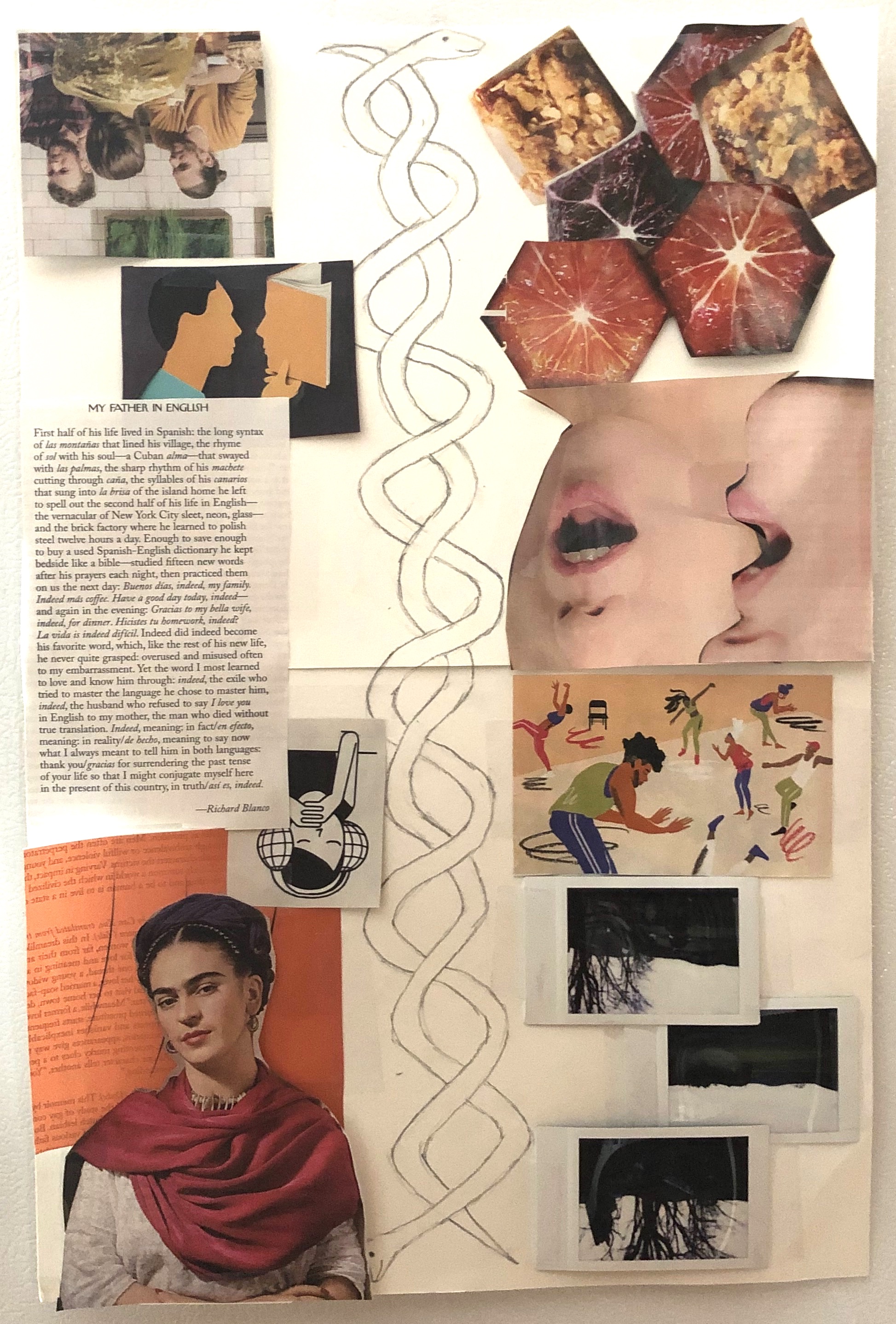
Artist Statement
From ages twelve to eighteen I struggled with depression. Even though today I consider myself to be a very social and extroverted person, during middle and high school I spent a lot of time in my room by myself. My freshman year of high school I began to see a new therapist. Her name was Deb and she recommended I make my solitude more meaningful or productive. Always having been an aesthetic and hands-on person, I decided to re-decorate my room as a way to restart and refresh the place where I spent the most time.
I started with the magazines laying around my house. Instead of holing up in my room reading or listening to music, I began to sit with my dad as he watched soccer and cut out whatever images compelled me from the pages scattered around my living room. My mother, seeing that I had taken up this new hobby, called our neighbor Susan and asked that she bring over all of her old magazines. She came by the following day with two enormous bins from the container store filled with year’s worth of every issue of every magazine you have ever heard of. Soon I had tons of words, graphics, photographs, advertisements, two page spreads all laid out on my bedroom floor. To avoid ruining the wall with tape and glue, I began to make micro collages on pieces of lined paper I would tear out of my notebook. Before I even realized what was happening, my entire wall was covered in loose leaf collage.
The first thing people ask when they hear that I am an Art History major is: “So, what kind of art do you like to make?” My response is always the same. “I actually was not blessed with the creative or artistic hand. I’m more of an art appreciator than an art maker.” But the poetry experiment, “DNA Time,” by Sue Dymoke and Pietro Roversi gave me some inspiration. While I am certainly not a poet, I have a propensity towards a medium that means a great deal to me, and something that I think I am good at. I wanted to use the constraints of the DNA structure to create a visual DNA poem like that of Dymoke and Roversi.
The piece is completely reversible. If we begin from the end with the image of people eating at a restaurant on the top left corner, you will see that on the right corner there are images of fruit and fruit bars. I have always been passionate about food, and I put the ceremony of coming together for a meal and making a treat for loved ones as complimentary elements of who I am.
Below that on the left side is one of my favorite poems by Richard Blanco and a figure holding a book—one of my more introverted qualities—that is placed opposite to the faces in mid conversation. When I take Myers-Briggs personality tests, I am almost 50/50 introverted/extroverted. I think these two images distill this juxtaposition.
Next, I pair my love of music with an image of a group of dancers. Modern dance was an enormous part of my life from age three until I graduated high school, but I was horrible at it. In fact, I was one of only seven girls who stuck with it all the way through. Not only am I so inflexible I can hardly touch my toes, but my memory for choreography is abysmal. There was just something so special about performing on stage for an audience. A sensation I loved and couldn’t shake despite my lack of talent.
Finally, the image of Frida Khalo and a work by Lucio Fontana (an Argentine artist!), is placed opposite to some of my polaroid photography. I took these photos at Mount Hope this past fall, and its one of my favorite places to spend time around Williamstown. The pair refers to both my love of fine art and my sustained desire to develop my own artistic practice.
By organizing these key components of who I am in “base pairs,” I felt that I could use the constraints to show the interrelatedness of the qualities and hobbies that make me who I am. What I liked about this piece was that it was so uniquely me that it might be difficult to discern the meaning without an explanatory text. Much of modern art is like that, minimalist and autobiographical.
I chose to draw the serpents featured on page 92 of Jeremy Narby’s The Cosmic Serpent because I loved the flexibility of the image. He writes, “by turning the picture upside down, you can see that the molecule is completely symmetrical—each half of the double helix can serve as a template for the synthesis of its complementary half.” The interchangeability of the perspective of the collage and the way the images worked together on the page was of particular interest to me.
My creative process for this project was similar to my teenage bedroom collage. I found different magazines and newspapers strewn about my apartment (I have a print subscription to The New Yorker) and cut out the images that most compelled me. When I was looking at all the clippings, this project took shape before my eyes. It was all right there, I just had to piece it all together to make it fit.
